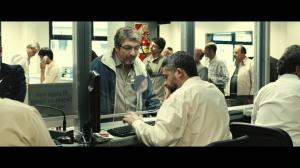Quentin Tarantino's 10 movies ranked from best to worst
Quentin Tarantino is one of the most important directors of independent and postmodern cinema. He is a director who has broken the rules of cinema to create a fresh new style.
His cinema, which has always been outside of what is established by the big studios, has the “Tarantino brand”, an unmistakable style for lovers of good cinema.
Here we propose a list of the best films of him, ordered with their own criteria, with the reasons and details for which they deserve your attention.
1. Pulp Fiction (1994)
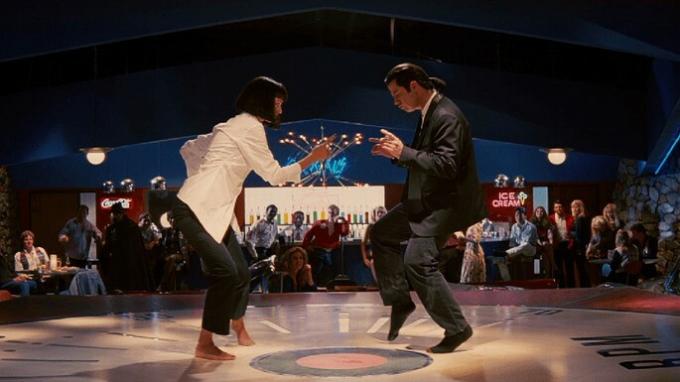
Why you should see it: It is the second film of the director. The film accumulates all the characteristic features of his cinema: hyperviolence as an aesthetic resource, non-linear structure, especially present in its first stage, the fragmentation into chapters, the multiple references to previous cinema and culture pop.
Pulp fiction revolves around two hit men, Vincent and Jules, whose mission is to recover a mysterious briefcase.
Details to be considered:
- Intertextuality with the tribute to the film 8 ½ by Fellini in the memorable dance scene harmonized with the song You Never Can Tell.
- The version of the biblical passage in Samuel L. Jackson.
- The many allusions to pop culture.
You may also like Quentin Tarantino Pulp Fiction Movie
2. Reservoir Dogs (1992)
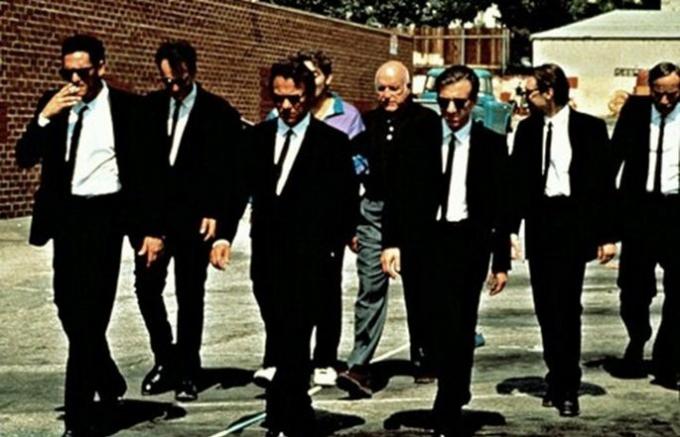
Why you should see it: the narrative structure, in the purest style of the director, is one of the great successes of this film. The story is fragmented into chapters, with an inverted montage, the events do not follow a linear order but instead makes continuous use of flashback. Faced with this, the viewer has a single function: to reconstruct the story.
With this film, Tarantino's career as a filmmaker begins. Also a new way of making cinema and a revolution for the cinematographic medium of the 90s. With Reservoir dogs a "cinematographic label" is born: the Tarantinian one.
The trigger is a failed robbery that we do not see. The story revolves around a gang of criminals who manage to escape from the police, which meet in an abandoned place where they are faced with a dilemma: discover who has informed the policeman.
Details to be considered:
- The improvised scene of Señor Rubio's dance as he tortures a policeman with the song Stuck in the Middle with You, the song "minimizes" and contrasts a violent scene.
3. Inglorious Basterds (2009)

Why you should see it: The great irony of this film is that, although it seems that we may be facing events based on real events, the director plays at will with events and is able to change the course of the story.
Known as Inglorious Bastards Y Damn bastards in Spanish, this story that took 10 years to forge, since Tarantino was not completely convinced with the end of the script. Inglourious Basterds, by setting, he invites us to believe that it is a war movie.
The film revolves around Shosanna, a young woman who has been the victim of the murder of her family during the German occupation in France, which, after the events, flees to Paris and changes her identity. Meanwhile, Aldo Raine prepares his troops to attack.
Details to be considered:
- The presence of very characteristic elements of the western genre of the 60s.
- His dialogues and his excellent visual and photographic setting.
- Ennio Morricone's soundtrack.
4. Kill Bill Vol. 2 (2004)
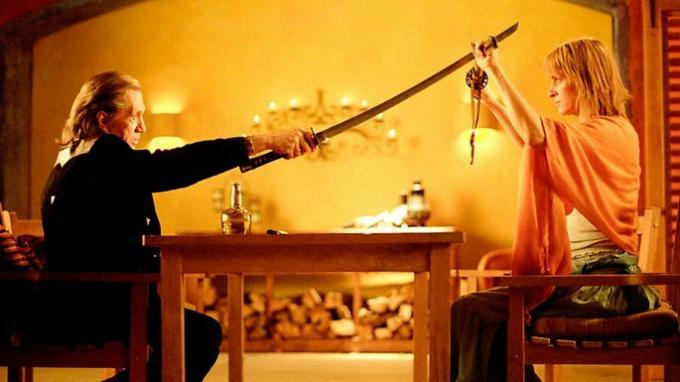
Why you should see it: Kill Bill Vol. 2 It is a hybridization of the director's favorite genres, but always passing through his cinematographic filter: martial arts films, western and black comedy.
It is the second part of the story that began with Kill Bill Vol. 1. In it, the protagonist has the mission of assassinating Budd and Elle Driver, two of her former companions, after having killed O-Ren and Vernita Green. He also intends to achieve her last task: to end Bill's life.
Details to be considered:
- It is somewhat less violent than its predecessor, with a more thoughtful character and with a loving undertone.
- The unique monologue about Superman.
- The sequence in which the protagonist leaves the box where she has been buried alive.
5. Once Upon a Time in Hollywood (2019)
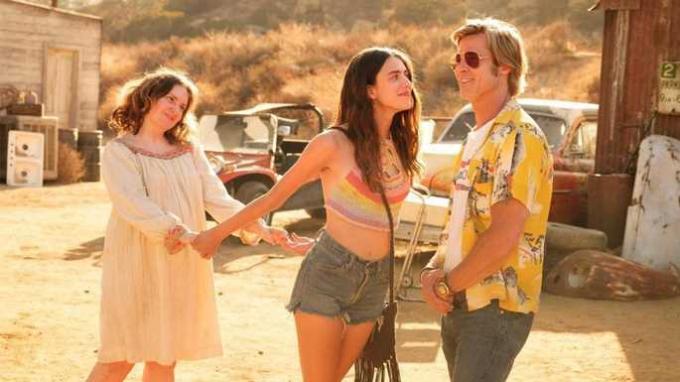
Why you should see it: this film differs from the director's usual themes. Here he enters, as a tribute, to the Hollywood of the late 60s, that of series B movies and television series. At a time when the television medium was very present in the life of American homes.
The film features two familiar faces, Brad Pitt, who plays a western actor who works on television, and Leonardo DiCaprio, who plays Cliff, an action voice actor who aspires to fame in a time of great change for the industry.
Details to be considered:
- Photography inspired by the 60s
- References to real and fictional characters of the time.
6. Kill Bill Vol. 1 (2003)

Why you should see it: the film is a tribute to martial arts films, popular during the 70s, also the spaghetti western film subgenre, which has significantly influenced the cinema of Tarantino.
The story of Kill bill It is so extensive that it is divided into two installments, although he himself considers it as a single film.
Uma Thurman plays here Mamba Negra, who is part of the team led by Bill. When the woman decides to leave the group, the assassin squad attacks her on her wedding day and kills her family. Soon, Mamba awakens from the coma and decides to get revenge on her.
Details to be considered:
- The interpretation of Uma Thurman.
- The spectacular sequence shot in which Uma crosses the dance floor with the song Woo hoo background has already gone down in the history of cinema.
7. Django Unchained (2012)
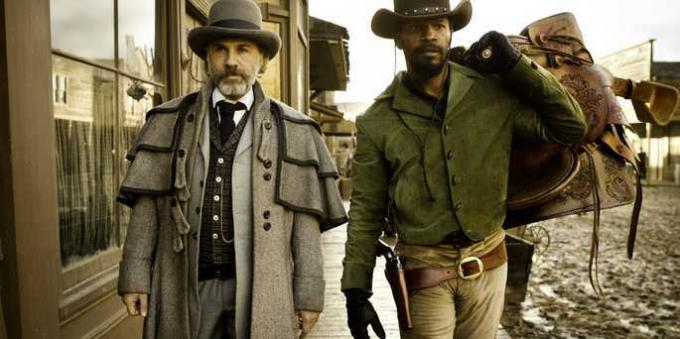
Why you should see it: one of the great objectives of the film is to echo the brutality of slavery and open a great debate. Tarantino resorts to especially violent scenes for this.
The film takes us to a time when racism was on the surface, in Texas in 1858. The plot revolves around Django, a slave rescued by a bounty hunter dentist who tries to find the whereabouts of three murderers. To do this he has the help of the protagonist, who in turn wishes to rescue his wife Broomhilda from slavery.
Details to be considered:
- Christoph Waltz's interpretation.
- The presence of Franco Nero, the protagonist of the original film Django (1966).
8. Jackie Brown (1997)

Why you should see it: It is the only film by the director that starts from an adapted script and, unlike the rest, contains fewer violent scenes.
The director's third film is, perhaps, the one that least shows his cinematographic stamp and the one that most disgusted some of the director's followers at the time of its premiere, for being different from the hits previous.
Jackie brown pays homage to the Blaxploitation film movement of the early 1970s. It tells the story of a flight attendant accused of drug trafficking, when she works for a dangerous trafficker. To avoid prison, Jackie Brown decides to collaborate with the police to catch Ordell.
Details to be considered:
- The tribute to the film The Graduate (1967) by Mike Nichols in the opening sequence.
- The tribute to Rashomon (1950) from Akira kurosawa at the end of the movie.
9. The Hateful Eight (2015)

Why you should see it: as in Django unchained in this film, Tarantino gives priority to the western genre and makes very interesting nods to great films of the genre, such as The diligence (1939) by John Ford.
In the middle of a snowstorm, a bounty hunter and a prisoner stop at a mysterious cabin inhabited by a group of strangers.
Details to be considered:
- It contains very good interpretations such as Samuel L. Jackson in his role as Marquis Warren.
- The director remains true to his style in The Hateful Eight, the film is loaded with suspense, mystery and good dialogue.
- It is filmed in 70 mm, a format currently in disuse but widely used in the western genre during the 70s.
10. Death Proof (2007)

Why you should see it: It is one of the director's box office failures, this does not imply that it is a bad movie, but it is different from the rest. It was presented together with the film Planet Terror by director Robert Rodríguez, both tapes under the name of Grindhouse, a title that serves as a nod to those movie theaters that exhibited exploitation films, which deal with socially inadmissible issues.
The film revolves around an unbalanced criminal who is responsible for kidnapping and murdering women.
Details to be considered:
- It has one of the best chase scenes in cinema.



